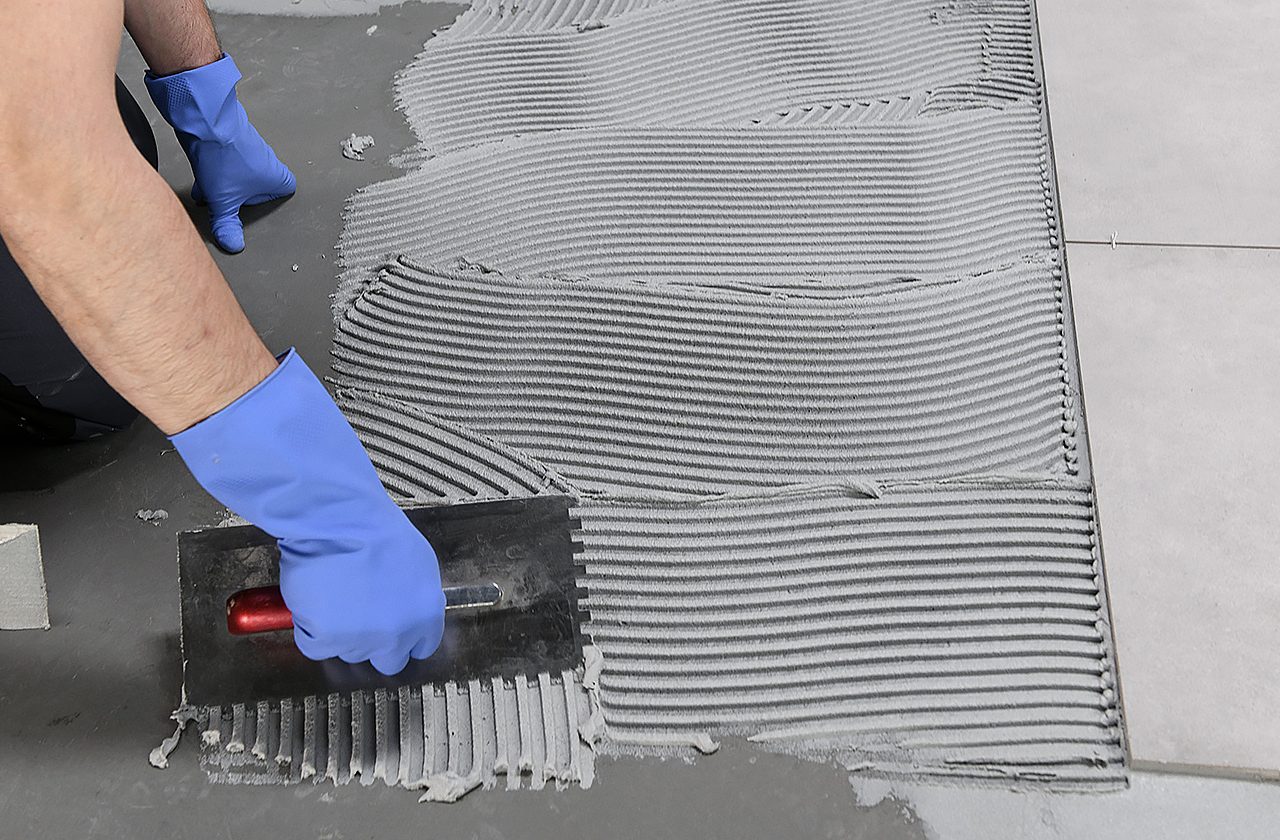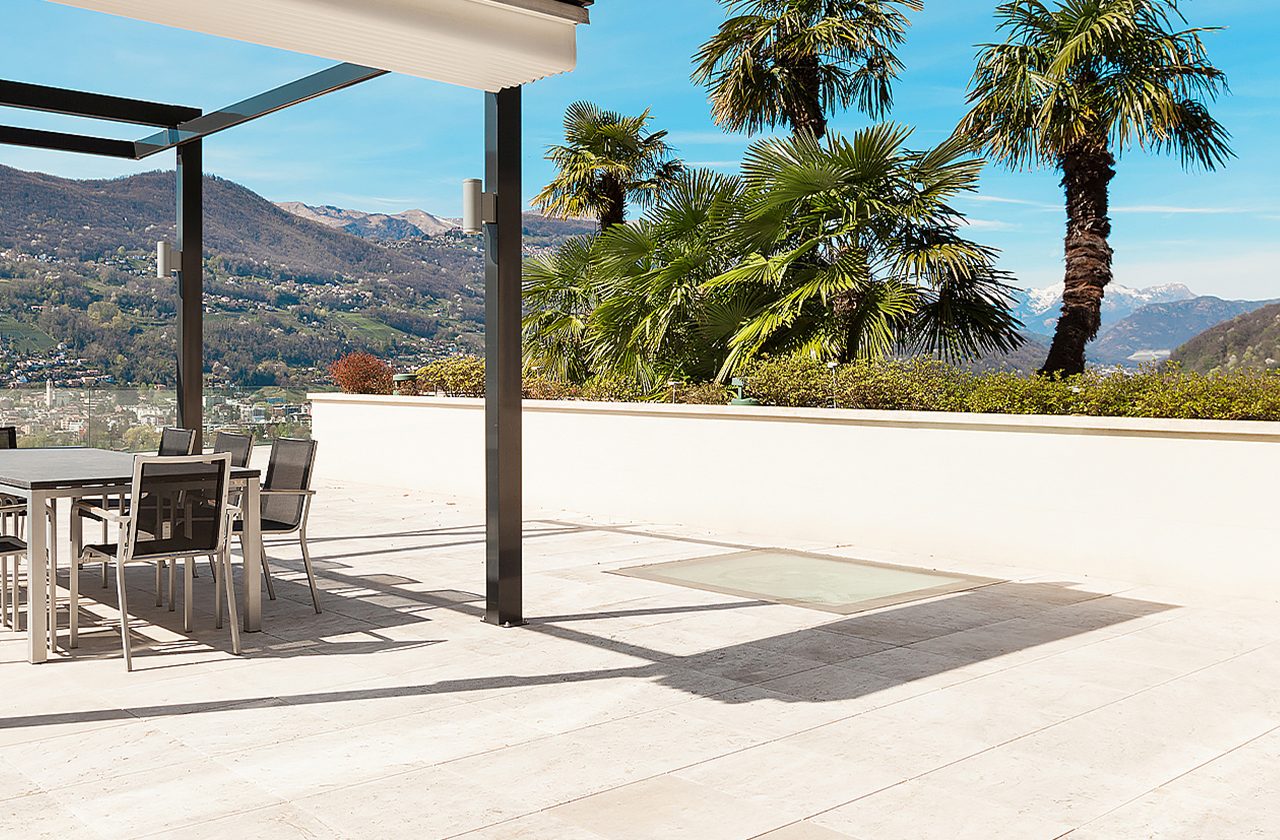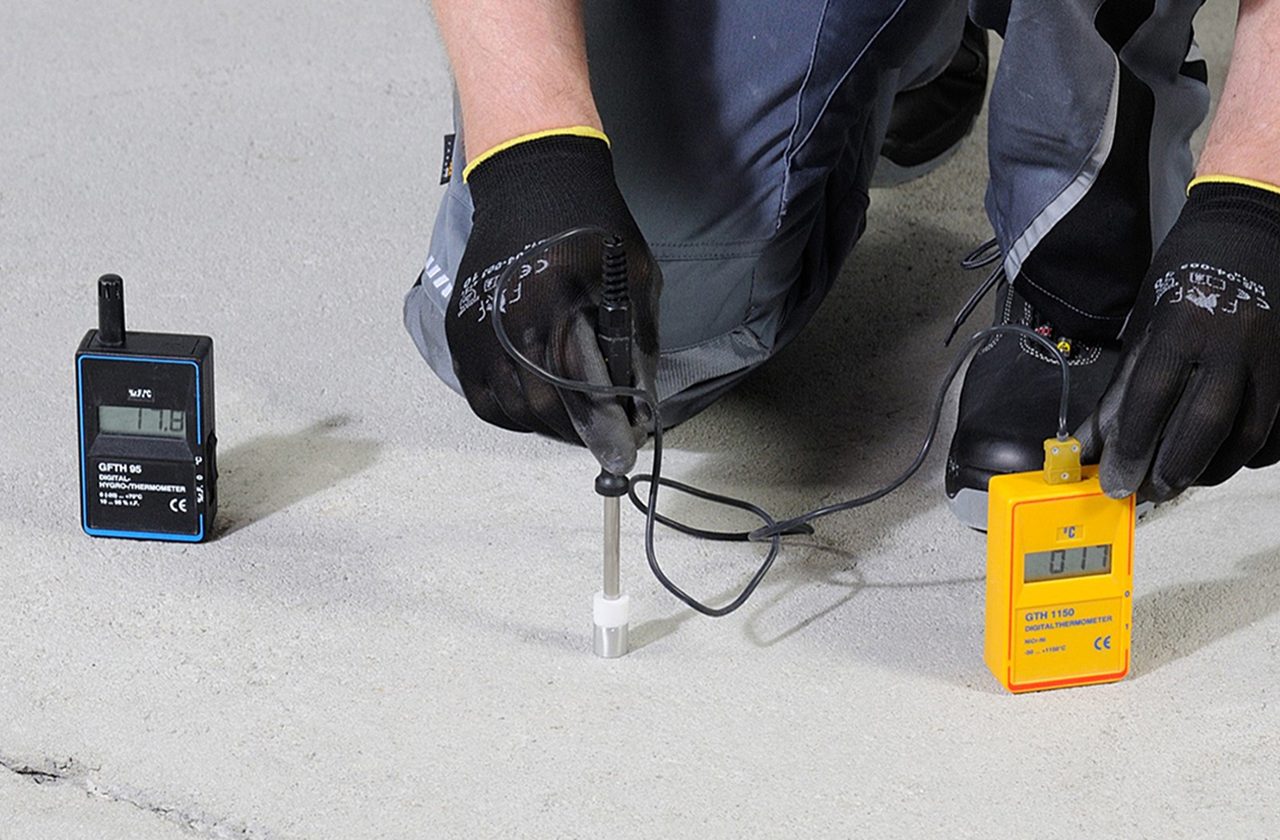YOU MAY NEED:
moisture measuring set
fast setting mortar
a primer
self levelling compound
CRUCIAL NUMBERS:
acceptable unevenness of floor surface is only 2 mm per 1 m
01. Measuring moisture in the subfloor
Measuring the moisture is in the substrate is a must, because it influences the following decisions:
- Which type of primer is needed?
- What leveling compound should be applied?
- Which type of tile or slab can be installed?
There are two methods for on-site moisture measurement:
- CM method (calcium carbide method). The moisture content of screeds is measured with the help of a CM moisture meter.
- CRH method (corresponding relative humidity). Moisture is measured with a humidity meter and an electronic data logger.
02. Grinding, repairs and filling up voids
First of all you need flat and even surface. Grinding is necessary when the floor is uneven, when a sintered layer or coating must be removed, or for producing a more absorbent (open-pored) floor.
Then you need to repair cracks and holes if there are any in the subfloor and fill up voids around shower and bathtub drainages. You can use one of fine filling compounds Ceresit CD 25 or CD 26, or fast setting mortar Ceresit CX 5 or CX 20, possibly rapid hardening mortar Ceresit CN 83 – depending on a kind of damages.
03. Creating slope
If you are going to tile a balcony, a terrace or a shower in a bathroom, you probably have to make a slope. It is the right moment to do it. For creating slope use rapid-hardening screed Ceresit CN 83 (layer thickness 5 to 30 mm).
In the case of linear shower drainage, the slope is on one or two sides, depending on the location of the shower channel, and should be at least 2.5% towards the drain. Point drainage requires a slope from four sides – to each edge of the grid (so-called envelope drain), which should be at least 2%. Please also pay attention to the recommendations of the drainage manufacturer regarding the type of slope.
Architects often call for a 1% slope on outdoor balconies and terraces, but this minimal slope does not provide sufficient drainage. Generally, positive drainage requires a slope of at least 2%.
04. Check the floor absorbency and apply the right primer
Priming is applied for surface strengthening and/or for regulation of absorption level. It is used also as a binding mean to join individual floor and wall coverings. To apply the right primer, you need to know how absorbent is your floor. Depending on a kind of substrate and special purposes, choose a proper primer:
- For absorbent screeds and concrete floors use dispersion water-based primer Ceresit R 777 or the universal one – Ceresit CT 17.
- For absorbent, impervious, dusting and unstable surfaces use PU primer Ceresit R 740.
- Against rising moisture and for surfaces exposed to mechanical and chemical stresses use epoxy primer Ceresit R 755.
- For universal purposes use a multi-purpose primer Ceresit R 766 or a universal primer Ceresit CT 19.
- For difficult substrates (PVC, tile-on-tile, chipboard etc.) use special primer Ceresit CT 19 or Ceresit CN 94.
05. Levelling uneven substrate
Now you can check the floor evenness. If there are depressions or level differences exceeding 2 mm per 1 m, you have to apply self levelling compound. Use Ceresit CN 68, CN 69 Super Nivel, or CN 72 Nivel Expert depending on your needs. More thin layer self levelling compounds by Ceresit you can find here.
OUR TIPS & HINTS FOR PROFESSIONALS:
Fixing cracks & assembling construction elements.
For quick repair of cracks and other damages as well as for fixing construction elements and pipes, both indoor and outdoor, we recommend fast setting mortars Ceresit CX 5 and CX 20.
CX 5 Express: with setting time 5 min.
CX 20 Comfort: with setting time 20 min.

Tiling large format tiles with CE 79 Epoxy
How to apply Epoxy adhesive and large format tiles.

A-type waterproofing and tiling of terraces
Find out how to install terrace layers properly.

Grouting with Ceresit reactive systems
How to apply and grout mosaics with epoxy adhesive.

Moisture measurement in floor cement substrates.
Never skip this step. Residual moisture measurement.